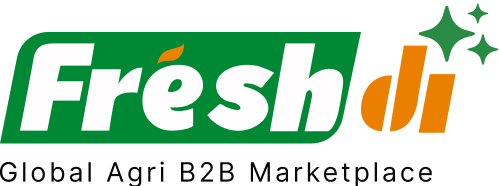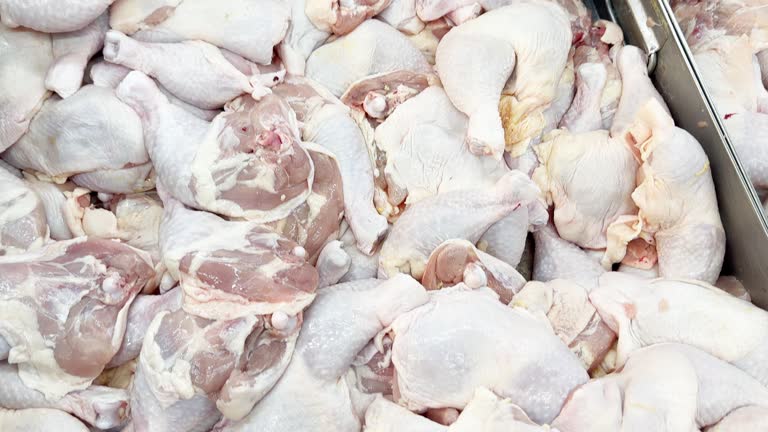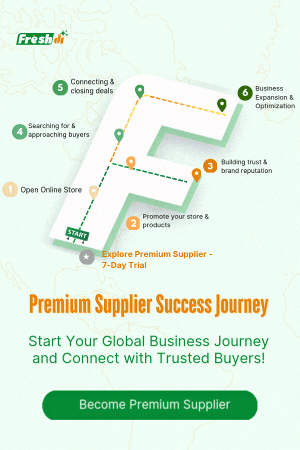Introduction – The Current State of Play: The Frozen Chicken Sector in Kenya
Kenya’s frozen chicken market in 2025 finds itself at a major turning point. A confluence of international trade negotiations, logistical hurdles, and domestic economic pressures is reshaping how suppliers, buyers, and industry players operate. The most pressing issue? The looming impact of the proposed US-Kenya Strategic Trade and Investment Partnership (STIP), which could open the floodgates to cheap US poultry. While that sounds great for price-conscious consumers, it’s ringing alarm bells across the local poultry industry.
The Poultry Breeders Association of Kenya (PBAK) has warned that allowing US poultry imports could slash demand for locally sourced chicken by a whopping 75%. That’s not a small dent — we’re talking about potential economic losses of Ksh172 billion (roughly US$1.3 billion). The reason? US producers benefit from high-efficiency production and economies of scale, enabling them to offer prices that Kenyan farmers just can’t match.
But it’s not just the US stirring the pot. Imports from Uganda are already undercutting local suppliers. One Ugandan company shipped 72,000 kilograms of chicken into Kenya in 2022 at prices well below local market rates — a move labeled as “predatory trade” by PBAK.
On top of that, Kenya’s cold chain infrastructure is straining under pressure. High operating costs, patchy rural coverage, and tough regulatory requirements mean that getting frozen chicken from farm to fork is more complicated than it should be.
Still, there’s a silver lining. Urban growth and the rise of large supermarket chains are fueling demand for frozen poultry. In Nairobi alone, over 200 retail outlets are relying on cold storage to deliver fresh and frozen meat to consumers. So while the road is bumpy, the destination may still be profitable — if businesses know how to navigate it.
Deep Dive – Breaking News: Critical Updates & Their Effects
Though there haven’t been any major recent technological breakthroughs or massive investments reported in Kenya’s frozen chicken sector, the changing trade dynamics and cold chain constraints are newsworthy enough. These evolving conditions are already triggering strategic shifts among suppliers and buyers alike.
Companies are reevaluating their sourcing networks, investing in local partnerships, and exploring digital platforms like Freshdi that offer verified supplier listings, real-time RFQ trends, and insights into how top players are adapting.
Top 5 Verified Frozen Chicken Suppliers in Kenya – Adapting to Today’s Market
As market dynamics shift, only the most agile suppliers survive and thrive. Here are the Top 5 Frozen Chicken Suppliers in Kenya in 2025, selected based on their trade history, certifications, global reach, and reviews on platforms like Freshdi.
1. East Africa Commodity Exporters Ltd
Known for its wide distribution network, East Africa Commodity Exporters Ltd specializes in frozen poultry products sourced from both local and regional farms. Their certification standards and export performance make them a go-to supplier for B2B buyers dealing in bulk.
2. Ovi Aegis
Ovi Aegis has built a strong reputation for timely delivery and consistent quality. Their operations are designed to cope with Kenya’s cold chain limitations, offering reliable refrigeration and storage solutions along their supply routes.
3. Survprint Tech Ltd.
This supplier is known for integrating tech-driven logistics with frozen poultry distribution. Survprint Tech Ltd. provides traceability features, giving buyers visibility into the entire journey of their products.
4. Sawa Agro Ltd
Focused on sustainability and local sourcing, Sawa Agro Ltd supports smallholder farmers while maintaining high food safety standards. They’re a preferred partner for retailers looking to keep their supply chain both ethical and efficient.
5. Clientchoice Food Processing Limited
Specializing in processed and value-added poultry products like chicken breasts and wings, Clientchoice is a favorite among supermarket chains and quick service restaurants. Their production facilities meet both local and international health standards.
Dynamic Ranking Note
Platforms like Freshdi provide dynamic rankings such as “Supplier of the Month/Quarter,” giving real-time insights into which suppliers are currently excelling based on RFQ activity, delivery reliability, and buyer feedback.
Market Navigation – Strategic Responses to The Current Frozen Chicken Landscape in Kenya
So, what does all this mean for businesses sourcing frozen chicken in Kenya?
First, import competition is real and rising. Companies that heavily depend on Kenyan poultry need to prepare for possible price wars and supply shifts. This could involve diversifying supplier portfolios or even exploring joint ventures to consolidate buying power.
Second, cold chain reliability is a make-or-break factor. Businesses can no longer afford to gamble with inconsistent storage or transport. Investing in vetted suppliers with proper refrigeration is essential. This is where platforms like Freshdi come in, offering supplier verification and insights into logistics capabilities.
Third, regional sourcing strategies may need tweaking. For instance, if one region in Kenya is seeing better feed availability or more stable weather conditions, it may become a more reliable sourcing hub. Keeping track of these micro-trends is key.
Lastly, product focus matters. With demand leaning towards value-added products (like pre-cut, marinated, or seasoned frozen chicken), suppliers who offer these options are likely to see higher traction.
Conclusion – Key Takeaways for Businesses in a Fast-Moving Market
The frozen chicken market in Kenya is undergoing a seismic shift in 2025. Between international trade pressures, domestic infrastructure gaps, and rising consumer demand, businesses can’t afford to stay static. Those who act quickly, adapt smartly, and align with resilient suppliers will not only survive — they’ll thrive.
Checklist for Frozen Chicken Buyers in Kenya (2025 Edition):
- ✅ Stay updated on trade negotiations and import/export policies.
- ✅ Use verified platforms like Freshdi to find reliable suppliers.
- ✅ Prioritize suppliers with proven cold chain capabilities.
- ✅ Diversify sourcing to minimize regional or supply-specific risks.
- ✅ Monitor demand trends — especially in urban centers.
- ✅ Consider value-added poultry products for better margins.
- ✅ Invest in long-term supplier relationships with scalable options.
- ✅ Keep an eye on dynamic rankings to spot rising stars in the supplier network.
Freshdi’s Role in the Market
Freshdi acts as a buyer’s secret weapon. It offers:
- Real-time market intelligence
- Verified supplier profiles
- Alerts on RFQ shifts based on real-world news
- Dynamic supplier rankings based on performance
- A powerful platform to connect with suppliers who are actively adapting to Kenya’s evolving poultry landscape
By leveraging these tools, buyers can make faster, smarter, and more profitable sourcing decisions in a high-pressure market.
FAQs
1. Why is the Kenyan frozen chicken market under pressure in 2025?
Trade policy changes (especially with the US), cheap imports from Uganda, and infrastructure gaps in cold chain logistics are putting serious strain on local suppliers.
2. What makes Freshdi a valuable tool for poultry buyers in Kenya?
Freshdi offers verified supplier listings, real-time market data, RFQ tracking, and performance-based rankings, making it easier to make informed sourcing decisions.
3. Are there any regions in Kenya better suited for sourcing frozen chicken right now?
While it depends on weather and feed availability, regions with better cold storage access and closer proximity to urban centers like Nairobi often offer more reliable supply.
4. What types of frozen chicken products are in highest demand in Kenya?
Value-added products — such as marinated cuts, boneless chicken breasts, and pre-packed portions — are increasingly popular in supermarkets and foodservice outlets.
5. How can businesses protect themselves from the impact of cheap imports?
By partnering with efficient, certified local suppliers and using platforms like Freshdi to identify those with competitive pricing and reliable logistics, businesses can stay resilient.
References
- foodbusinessmea.com – US Chicken Imports Threat
- poultrynews.africa – Ugandan Imports Undercutting Local Farmers
- tracedataresearch.com – Kenya Cold Chain Market
- Freshdi – B2B Supplier Platform


